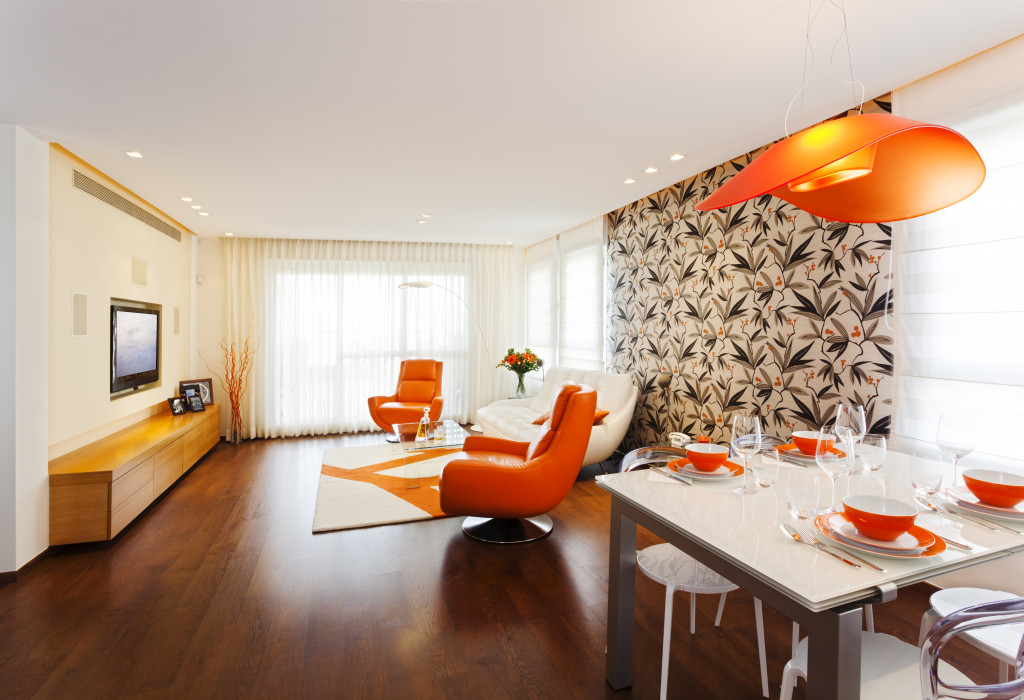- Clear pathways and ensure the home is free of clutter to minimize the risk of tripping.
- Add brighter lightbulbs and make sure windows are not blocked by curtains.
- Install handles and rails throughout the home for balance and mobility and place non-slip mats in bathrooms and kitchens and add strips to stairs.
- Seek professional help such as memory care providers, occupational therapists, and home health aides.
- Consider an emergency response system if necessary.
As your loved ones age, it becomes increasingly important to ensure that their environment is tailored to meet their needs. This includes creating a safe space that they can move around in without the risk of injury or discomfort. As you know, accidents happen, but there are steps you can take to minimize the likelihood of them occurring, especially when it comes to your older family members. Here are a few ways you can do this.
Make Simple House Upgrades

Simple upgrades in strategic spots can make a huge difference when it comes to safety for elderly family members. These can be helpful for those using walkers or wheelchairs and sometimes can help with balance when walking up and down stairs. Here are some examples:
Clear Pathways
Creating clear pathways is one of the most important steps you can take to ensure your elderly loved one’s safety at home. Ensure that their home is free of clutter, including electrical cords, throw rugs, books, and other items that may block their path. This will minimize the likelihood of them tripping and potentially hurting themselves.
Adequate Lighting
As people age, their eyesight may begin to deteriorate. You can help your loved one by ensuring that their environment is well-lit.
This includes adding brighter light bulbs, making sure the windows are not blocked by curtains, and ensuring that there are lights in all the crucial areas, including bedrooms, bathrooms, and hallways. If necessary, consider investing in night lights or motion sensor lighting to help them navigate their home safely at night.
Handles and Rails
Adding handles and rails throughout the home can help your elderly family member maintain their balance and mobility. Whether it’s in the bathroom near the tub or shower or along a hallway, these grab bars can make all the difference in preventing falls. Ensure that the handles and rails are installed securely and are at the right height for your loved one to use.
Non-slip Surfaces
Slippery surfaces, especially in the bathroom or kitchen, can be dangerous for elderly family members. Consider adding non-slip mats to the floors of these rooms and ensuring that any spills are cleaned up right away. You can also add non-slip strips to stairs and other slippery surfaces to reduce accidents.
Seek Professional Help
Suppose you are unsure of what other measures to take in order to create a safe environment for your elderly family member; consider consulting with a professional. They can help assess the home and make recommendations accordingly. Alternatively, they can also take in the responsibility of caring for your loved one. Here are some examples:
Memory Care Provider
For elderly family members with memory-related issues such as dementia or Alzheimer’s, it is imperative to ensure they have a safe and secure environment. Consider looking into comprehensive memory care providers who can help you create an environment tailored specifically to the needs of your loved one.
Occupational Therapist

An occupational therapist can provide services that help elderly family members maintain their independence. They are knowledgeable in home modifications and strategies that can be used to ensure safety and increase comfort.
Home Health Aide
A home health aide can provide the necessary care for your elderly family member. These individuals are trained to provide a safe environment and help their clients with their daily activities, such as bathing, dressing, and more.
Emergency Response Systems
Finally, for extra peace of mind, consider an emergency response system. These systems work by pressing a button to call for medical assistance in the event of an emergency.
Your loved one can wear this system around their neck or wrist and can quickly press the button if they need help. For instance, if they fall and are unable to get up, the system will immediately contact medical personnel for assistance.
Alternatively, you can also consider a medical alert system that works with sensors installed in the home. The sensors will detect any changes in the environment and will notify emergency personnel if any issues arise.
Creating a safe environment for your elderly loved ones doesn’t have to be complicated. With a few simple steps, such as clearing pathways, ensuring adequate lighting, adding handles and rails, installing non-slip surfaces, and adding an emergency response system, you can help your family members age in place more comfortably and safely. Remember that the goal is to minimize the risk of injury, so while some of these steps may seem small, they can make a big difference in the long run.
